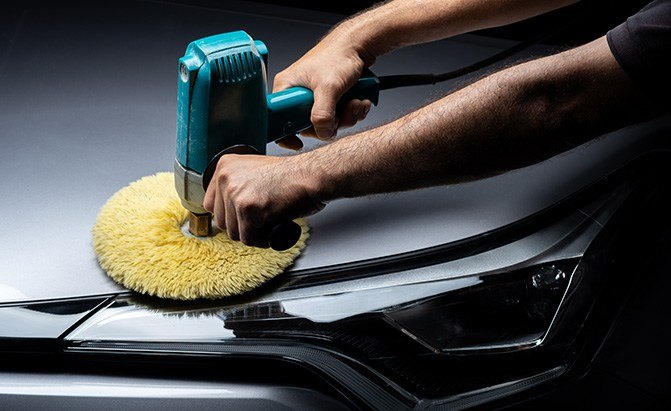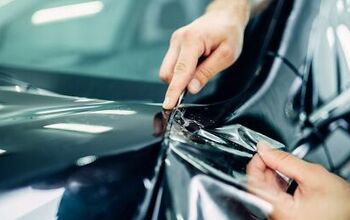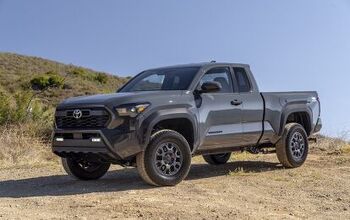The Best Car Buffers to Bring Out the Shine in Your Ride
Properly caring for your vehicle is no easy task, especially if you plan on owning it for years. It might happen slowly, but the abuse your car takes on a daily basis will slowly wear on its appearance, damaging the finish and paint. Sure, routine washes help keep that coat of paint shiny and nice, but to truly preserve it for years, you’ll want to regularly give it a coat of wax. But we all know that takes quite a bit more effort than just washing your car.
Buffing your car or truck is hard work, or at least it is if you do it by hand. Hours of wax on and wax off can be hard on your hands, shoulders, and elbows, as well as your back and patience. It’s why electric car buffers exist: Letting you bring out that shine with less time, less effort, and less sweat. But what should you look for?
In this article, we’ll take a look at the best car buffers available, helping you find the one that does the job you need, with the least amount of fuss for your situation.
For more information on the best car buffers, refer to our table of contents.
Table of contents
- 1. Editor's Pick: PORTER-CABLE Variable Speed Polisher
- 2. DEWALT Variable Speed Buffer/Polisher
- 3. WEN 6" Waxer/Polisher
- 4. POLIWELL Car Polishing & Buffing Sponge Pads Kit
- 5. WEN 10" Polisher/Waxer
- 6. TACKLIFE Buffer/Polisher
- 7. CUBEWAY Dual-Action Buffer/Polisher
- 8. Ryobi One+ Cordless Orbital Buffer/Polisher
- 9. Chemical Guys TORQX Random Polisher Kit
- 10. Neiko Pneumatic Air Angle Polisher
- Why do I need a car buffer?
- What to look for when shopping for a car buffer:
- Tips for using a car buffer:
1. Editor's Pick: PORTER-CABLE Variable Speed Polisher
This is the go-to, the default, the Kleenex of car polishing. For a long time, PORTER-CABLE was the only choice worth looking at, and it's still one of the best options out there. For sanding, buffing, and polishing your car, truck, or even boat, this random orbit polisher has a 4.5-amp motor and uses a standard-size six-inch pad. Weighing in at 5.5 lbs, it's not the lightest, but it's still compact.
The variable speed on this buffer lets you adjust from 2,500 all the way to 6,800 orbits per minute, so you can account for the surface, temperature, and what you're using to buff. This way, you can remove everything from light wax to deep scratches. The compact body has a built-in handle and there's a side-swappable (or removable) secondary handle for left- or right-hand use or to get into tight spots. A three-year warranty and full roller bearing construction mean that this should last you for many, many buffs.
Pros | Long warranty, durable, variable speed |
Cons | Price, weight, doesn't include backing plate |
2. DEWALT Variable Speed Buffer/Polisher
Another solid choice for a basic buffer and polisher, this DEWALT Max XR gives you the benefit of a 20V lithium-ion battery. Going cordless can give you more flexibility for your car buffing, letting you shine that paint or take out those scratches at almost any job site. You could even polish your Jeep in the middle of the trail if you wanted to. Being untethered by a cord gives you flexibility, but it also means it might not be the right choice for all-day use.
The DEWALT buffer has a no-load speed of 800 to 2,200 rpm letting it work well in multiple applications. The battery is shared with DEWALT's line of Max XR cordless power tools, so you can share batteries and chargers with your other tools for added convenience. The removable handle is a large U-shape rather than the more common short handle, which can make it much easier to use, especially over long durations. Corded versions or a bare tool (to use your existing battery and charger) are available to help lower the price.
Pros | Cordless, large and flexible handle |
Cons | Cordless doesn't come cheap, lower top speeds |
3. WEN 6" Waxer/Polisher
A lightweight, portable, and easy-to-use detailing classic, the WEN 6010 six-inch buffer is ideal for starting out on polishing and buffing your car. While it doesn't have a large handle, the entire body of the machine is designed for easy one-handed use. That doesn't stop it from being used easily with two hands, though.
The manufacturer says that this random orbit waxer is delicate enough for any finish, but powerful enough for any blemish. WEN was the creator of random orbit technology, where the pad is always changing its arc of rotation. It doesn't stay on the same exact spot on each spin, which removes nearly any possibility of burning or rubbing through your paint caused by holding the buffer in one place, which is perfect for beginners and easily-distracted pros alike.
Affordable, with easily-swapped bonnets and a one-year warranty, this is an entry-level buffer that should keep owners happy for many wax jobs ahead.
Pros | Low-price, single-speed, random orbit |
Cons | No second handle, limited speed, five-foot cord |
4. POLIWELL Car Polishing & Buffing Sponge Pads Kit
Just because you want to buff your vehicle, it doesn't mean that you need an entirely new tool. If you're limited on storage space, or on budget, this kit from POLIWELL is a great option that attaches to a drill (corded or cordless) that you already have. With multiple wool and foam bonnet pads, you won't need to purchase extra items to complete the job.
Simply secure the backing pad into the chuck of your drill, attach the pad you want, and you're ready to buff. Not ideal for frequent or professional use, because your typical cordless drill doesn't spin quickly enough for tougher work, and the motor may not appreciate hours of constant use. But this is great for that twice a year seasonal waxing and buffing that you're planning to do. Multiple grades of pad give you options ranging from a light buff to more severe scratch and scuff removal.
Pros | Low price, uses tools you already have |
Cons | Requires your own drill, no random orbit can burn paint |
5. WEN 10" Polisher/Waxer
A larger surface means you can buff your car or truck more quickly, so it takes less time. This 10-inch model from WEN lets you do just that, making 3,200 orbits per minute to get the job done with ease. Two large handles let you control the buffer, which the manufacturer says also works on floors or in the kitchen, places you wouldn't want to start with a smaller six-inch model.
With a random orbit operation, the buffer pad won't stay in one place, making sure that you won't burn your paint. Though that, combined with the slower spin speed, means that it may not be aggressive enough to get out deeper scratches and swirl marks. Still, to get a fresh coat of polish and wax on your vehicle, it's hard to beat this for speed and ease of use. A storage case is included that keeps the polisher clean, secure, and out of the way until you're ready to use it, reducing clutter in your garage or workspace.
Pros | 10-inch pad, random orbit |
Cons | Large size can be tougher to get into small areas, harder to handle for beginners or those with mobility issues |
6. TACKLIFE Buffer/Polisher
A seven-inch pad and 12.5-amp motor make this TACKLIFE buffer ready to tackle jobs ranging from a light waxing to serious imperfection removal. To help with that, it also has a ball-bearing motor for smoothness and longevity, along with six variable speeds to let you select how much buffing you want and how quickly.
A digital screen on this buffer shows you exactly what speed you've picked, and unlike most variable speed polishers, it will remember what speed you were on if you turn it off and back on again. For anyone needing to stop and start frequently, that's a lifesaver. A large D-shape handle is adjustable and gives the user greater control as does a trigger lock that means you don't need to hold down the on-switch the entire time you're using the buffer.
This kit comes with an extra set of brushes for the motor, letting you maintain and renew your polisher down the road.
Pros | Replaceable parts, digital screen, speed selection memory |
Cons | Not random orbit or dual-action, handle doesn't allow side-holding |
7. CUBEWAY Dual-Action Buffer/Polisher
A big D-shape handle and a pistol-grip with trigger are the big appeals of this buffer, and it looks like it should be easy to use all day long as a result. Plus it's a dual-action polisher which does a swirl-free job of shining your paint while helping to lower the risk of you burning the finish. Twelve different variable speed settings from 1,800 to 5,000 rpm and a lock-on switch go further to help you take on the tasks of buffing. Lower speeds for waxing and normal buffing and higher speeds for removing paint defects make this a flexible option.
The six-inch backing plate uses a hook and loop fastener system for ease of pad installation and is one of the commonly available sizes. Waxing, buffing, and polishing pads are included in the kit, letting you get started on buffing your car or truck immediately, though pros might want a motor with more power than the 0.45 amps of this one.
Pros | Large handles, comes with 12 speeds and various pads |
Cons | Short cord, low power motor, backing plate not replaceable |
8. Ryobi One+ Cordless Orbital Buffer/Polisher
Another cordless option, but this time a more traditional orbital buffer and polisher. With a 10-inch backing plate to help you cover the surface of your vehicle and two large handles, this single-speed random orbit machine is ready to get to work. It uses the Ryobi One+ 18V lithium-ion battery system, which can be shared between 50 different Ryobi tools that are ready to accept the same battery pack. If you already use the One+ battery system, this one is an easy choice.
This buffer spins at up to 2,500 rpm for fast-acting and a swirl-free polishing without tying you to a wall. The random orbit design helps to ensure you can't burn through or over-polish your vehicle finish. The manufacturer says it should offer 1.5 hours of buffing time with a single battery—which should be plenty to finish any vehicle—but swappable batteries and short charge times can get you back to work quickly.
Pros | Cordless, flexible battery system, random orbit |
Cons | 90 minutes of battery life, awkward battery positioning |
9. Chemical Guys TORQX Random Polisher Kit
A polishing and buffing kit that comes with everything you need, both on the hardware side and the chemical side, this can be an ideal gift for any car enthusiast or just a great way to get started. The polisher can spin at up to 7,800 rpm for removing scratches and imperfections, or as slow as 2,800 rpm for buffing and polishing, and lets you pick from multiple speed options.
The kit comes with three different pads for varying levels of polishing, and also comes with four levels of compound including a cutting polish and a final polish, letting you work step by step to bring your car or truck's faded paint back to brand new. A 700-watt motor prevents the buffer from bogging down or stalling and lets you keep on shining until the job is done. The manufacturer says it's powerful enough for a pro, but can be gentle enough for even beginners. That means this kit can still be used if you move on to more challenging detailing jobs.
Pros | Comes with pads and polishes |
Cons | Pricey, lacks handle to let you use both hands |
10. Neiko Pneumatic Air Angle Polisher
If you work in a real shop, or a nice home garage, you might have access to air power. In that case, check out this pneumatic polisher for a very different option. It weighs just 4 lbs and is able to spin between 1,500 and 2,600 rpm, which is ideal for quickly buffing your vehicle's finish. Thanks to the air trigger, you can vary the speed to fit what you're doing with a simple squeeze and release of a finger.
The handle can easily switch sides to fit into hard to reach areas of for either hand operation. A muffled exhaust can make it quieter than an electric polisher, depending on how well your compressor tank is insulated, at least. It takes a seven-inch pad and uses a 1/4-inch NPT fitting that's easy to snap on and off with an airline quick release.
Pros | Uses air instead of electricity |
Cons | Needs a larger-size compressor |
Why do I need a car buffer?
Photo credit: Bhakpong / Shutterstock.com
When it comes to polishing out scratches and swirls, you're really removing small amounts of the paint or clear coat on the surface. While you can do that by hand, using a rotating machine is like wiping the same spot thousands of times a minute. Just try doing that by hand!
Buffers remove scratches to restore the shine of your vehicle or imperfections that spoil that mirror finish you want. They do it far more quickly and effectively than hand buffing, while using less effort and leaving you not too tired to enjoy the results of your work. You can save money by buffing, not just by improving the appearance of your vehicle, but by doing the job of a wax or polish yourself instead of taking an expensive trip to a professional detailer.
What to look for when shopping for a car buffer:
If you're always at the gym, a heavy one-handed buffer might work just fine, but for the rest of us, both hands are needed. So look for a buffer with easy-to-use handles, especially if it has more than one, or a handle that can be removed or side-swapped as needed. For most uses, a six- or seven-inch buffer is fine, but if you're looking at the flanks of a big pickup then you might want a 10-inch model. If you're already using a certain brand of cordless tools, sticking with that same brand should give you more battery flexibility.
Tips for using a car buffer:
Make sure the car is completely clean before you start applying wax or polish and buffing. That usually means a hand wash, as most spray washes leave large amounts of soil on the surface of your paint. Work in a well lit area so that you can easily see the spots you're working on.
But, while you need lots of light, it shouldn't be direct sunlight. Direct sun can bake the wax or polish into your finish, making it tougher to remove and possibly leaving new imperfections behind that weren't there when you started.
Don't dry-polish or wax paint. If you're applying the wax or polish using the buffer, put some on the pad before you put the buffer pad on your paint. Then move it around to distribute some wax or polish before turning the buffer on.
Lower RPM means less heat build-up and is best for simple waxing and polishing. Make sure to use both a pad and compound that are designed to do what you're attempting.
We are committed to finding, researching, and recommending the best products. We earn commissions from purchases you make using the retail links in our product reviews. Learn more about how this works.
Main photo credit: Bhakpong / Shutterstock.com
Evan moved from engineering to automotive journalism 10 years ago (it turns out cars are more interesting than fibreglass pipes), but has been following the auto industry for his entire life. Evan is an award-winning automotive writer and photographer and is the current President of the Automobile Journalists Association of Canada. You'll find him behind his keyboard, behind the wheel, or complaining that tiny sports cars are too small for his XXXL frame.
More by Evan Williams











































Comments
Join the conversation